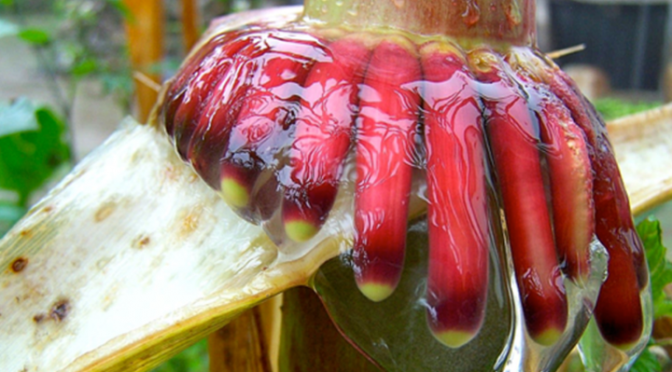Celebrating Plants and People
-

California Wildfires Threaten Largest And Very Ancient Juniper
“I know some folks like to say 6,000 but that’s probably too high. It’s in the range of 2,ooo to 4,000 years old.” (Click on title for full story.)
-

Unique Heirloom Corn Fertilizes Itself.Now It Might Revolutionize Agriculture While Saving The Farmers Who Saved It
“I would talk about this maize, and Alan would say, ‘It’s not possible,’” Shapiro recalls. “I said it is possible but I just don’t know how to prove it. And I took him to Sierra Mixe for a visit in 2008. He was gobsmacked. He said, ‘I take it all back. There’s something going on…
-

Plants Create Extra-Floral Nectaries To Attract Defender Ants. But Ant Predators Use It As A Trap
Researchers detail the behavior of Rhinoleucophenga myrmecophaga fly larvae, which perch atop extrafloral nectaries on the common plant, form a small shelter, and use the nectar to attract the visiting ants. The larvae then sink their mouth hooks into the trapped ants and feed on their insides. “This exploitation of an ant-plant mutualism is peculiar…
-

Grassland Restoration Efforts Find Success Using Chili Peppers To Deter Seed-Gobbling Mice
After 4 years of laboratory and field experiments in Montana’s Missoula Valley, researchers found a workable recipe. A powder made from the Bhut jolokia, or ghost pepper, from India—considered to be one of the world’s hottest chilis—did the trick. (Click on title for full story.)
-

Seeds That Smell Like Prey Trick Hornets Into Becoming Gardeners
“We suggest that ‘smelling like prey’ may be not uncommon and may be an underestimated tactic in the dispersal of seeds in other mymecochorous plants,” (Click on title for full story.)
-

A Forest Cannot Thrive With Trees Alone: Study Shows Healthy, Productive Forests Depend On Animal And Fungal Diversity
To understand why and how a loss of biodiversity affects these forests, it is not enough to concentrate solely on the trees and their species diversity.” The species richness of herbivores and their competitors was also important, an important finding with regard to the expected intensification and the possible prevention of pest infestation with progressive…
-

Hiding In Plain Sight: Hollow Trees Host Unheard Of Moth Slumber Parties
“Monarchs are the most celebrated insects in the world because of their remarkable behavior, and yet here in Florida, about 15 minutes north of Gainesville, you can find something just as interesting from the biological perspective,” (Click on title for full story.)
-

Researchers Propose Both The Lorax And The Over-Harvested Truffula Trees Are Real
The illustrations in The Lorax provide important clues. For example, the spiky, barren trees outside the Once-ler’s home look like the whistling thorn acacia (Acacia drepanolobium), a common tree found on the Laikipia plateau in Kenya. If Geisel noticed these trees while he was there, then he probably also saw patas monkeys (Erythrocebus patas), which…
-

Bio-engineering Houseplants To Monitor Indoor Health
The idea is to genetically engineer house plants to serve as subtle alarms that something is amiss in our home and office environments. (Click on title for full story.)
-

Biofuel Breakthrough: Feeding Agricultural Waste To Algae
“Identifying algae strains that can use plant substrates, such as switchgrass and corn stover (the part of the plant left in a field after harvest) to grow faster and with more lipids suggests that waste plant material can be used to increase the productivity of algae during cultivation for biofuels or bioproducts. Pinpointing the unique…
